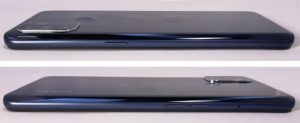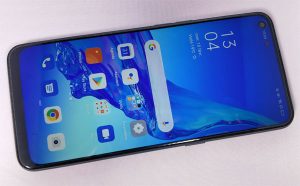Oppo A53s review
Oppo A53s review
Oppo A53s The A series at Oppo represents the entry level. The Oppo A53s model is a derivative of the Oppo A53 and has been available for a few weeks now. One of its most remarkable features is the capacity of its 5000 mAh battery, which promises a good battery life. Note also that its LCD screen allows a refresh rate of 90 Hz, far from being common on the most affordable mobiles on the market. We got to test it for a while and here are our impressions.

Main technical characteristics:
6.5 inch LCD screen, 720×1600 pixels 90Hz
Qualcomm Snapdragon 460 Chipset
4 GB of RAM
128 GB of non-expandable internal storage
Triple 13 + 2 + 2 megapixel photo sensor
8 megapixel front sensor
Fingerprint reader on the back
5000 mAh battery compatible with 9 watt charge (compatible charger included)
Operating system: Android 10 with ColorOS 7.2 overlay
Design

Aesthetically, the Oppo A53s smartphone is more of a mid-range model than an entry-level. Indeed, it offers beautiful, fluid and pleasant lines with just enough rounding to allow a pleasant grip with each entry. The back of the device is plastic with reflections. Our model is dark blue (very dark, almost black) which offers luminous halos on the back side. Watch out for fingerprints which are particularly visible there. For all intents and purposes, the manufacturer delivers a transparent silicone shell in the box to protect it immediately from the first handling. On the back there is the fingerprint reader in a relatively high position. You have to get the hang of it at first, then you get used to it.

The photo optical unit is in the upper left corner, rather discreet on a black background and underlined by a chrome border enhancing the design of the device. Perhaps we can fault it for being a little too close to the fingerprint reader, as we have occasionally put our finger on it, thinking that this is the location for the unlocking of the device.

The profiles of the mobile are made of plastic. Matte, they don’t reflect light like the back. On the right side there is the power button. On the other side, there are two buttons to manage the volume which we prefer to a single button, sometimes more difficult to locate without looking at it. There is also the card drawer. The slot can simultaneously support two SIM cards (nano format) and a micro SD storage card. Finally, on the lower profile of the A53s, there is a 3.5mm audio jack port, the USB-C connector and a speaker. The latter delivers a sound that is just passable. It is desperately mono and very localized when watching a video or playing a game. It will soon be easy to connect the mobile to a headset or use Bluetooth. The good news here is support for the aptx HD standard, wireless, limiting loss and ensuring good audio quality.
A low definition screen, but 90 Hz
The screen of the Oppo A53s smartphone measures 6.5 inches. This is a classic LCD panel with a punch in the upper left corner to make room for the front photo sensor. This allows for maximum display space which is always a good thing. The screen resolution is only 720×1600 pixels. It’s not a lot, but to offer such an affordable price, the manufacturer had to make choices.
On the other hand, note the possibility of increasing to a refresh rate of 90 Hz, not activated by default, but which must be made operational immediately. Indeed, this mode allows to obtain a better fluidity in the scrolling of pages and in the games. The setting is adaptive which is a great thing for battery life, as it is the system that determines whether the application in use needs 60 Hz or 90 Hz, the latter being more battery-intensive. Overall and in use, the panel is rather bright and offers a correct rendering right out of the box without having to go to the display settings to modify the limited settings, here at the concept of color temperature (colder, default, warmer).
Still running Android 10, but ready for version 11
The Oppo A53s is powered by Google’s operating system, Android in version 10. The manufacturer promises to be able to upgrade to Android 11 as soon as it makes it available. In the meantime, it also uses the ColorOS 7.2 software overlay. The interface remains efficient and has progressed well for a few releases now. The settings are pretty well organized and pretty clear. Navigation by gestures is possible and the shortcut function bar is rather provided. Several applications are preinstalled including classic tools, those of Google as well as WPS Office.

